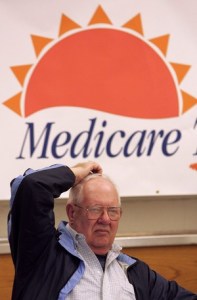Bipolar Disorder/Mental Health/Slice Of Life
By – Sheri de Grom

My Grandmother Fromm taught me the importance of keeping a journal when I was 8. She said, “It is never simply a record of daily events.”This blog is a journal entry dated Dec. 25, 1989, Washington, D.C.
Goodwill toward men—my first thought on Christmas morning.

…..
No, Sheri. You will not feel sorry for yourself. This is your life and welcome to it. You made the decision to move to D.C. The decision that moved you away from the central coast of California and everything plus everyone you loved.
My only companion for the day would be Farley, our beloved shih tzu, and we were going to make the best of it. It had stopped snowing sometime in the night, and I was grateful.
I wasn’t pretending that I had Christmas spirit. Not a single ornament dressed the house. I wanted Tom, not tinsel.
Christmas had always been my favorite holiday. I’d loved the excitement and anticipation, the gift wrap and adornment, the music and traditional activities. But, like Tom, Christmas had vanished.

Christmas Decorations Remained In The Attic. I’d decided to live with memories of days gone by.
I’d promised Farley we wouldn’t listen to Christmas music today. Not one single song. But, who am I trying to convince? The telephone startled me.
“Hello?”
“Mrs. de Grom.”
My heart dropped and I gulped, “yes.”
“This is Nurse Decker from the mental health unit. We have a situation and . . . uh . . .”
I interrupted, “what do you mean?”
“Mr. de Grom is . . . well . . . he’s . . .”
I couldn’t stand her hesitation. The charge nurse of a metropolitan mental health unit didn’t want to tell me she had no idea how to care for my husband. My mind raced to past hospitalizations.
It sounded like psychotic breaks that Tom had experienced before but I couldn’t be certain. Not over the phone. What if it was something else?
“Nurse Decker, please keep my husband safe. Do not leave him alone. I’m on my way. The drive is about an hour but traffic might be light today, with it being Christmas.”
The charge nurse, with obvious relief in her voice said, “Thank you, Mrs.
de Grom. We’ll see you soon. Drive carefully.”
Farley shivered beside me. “Come here, fellow.” Picking him up, I held him close as I went downstairs to grab a diet coke. I didn’t have time to make coffee.
Farley, a California guy, wasn’t eager to go out in the snow. He made quick work of  trip. I wrapped him in a towel and continued talking while I raced upstairs.
trip. I wrapped him in a towel and continued talking while I raced upstairs.
I had no time for a shower. That would come later, Tom needed me. I glanced at my face while brushing my teeth and not only declared it a hat day but noted my face had lost a ten-round boxing match with my pillow last night.
Impossible, impossible. There were yesterday’s jeans I’d worn last. I pulled them on. Where were my shoes? I moved slowly, or so it seemed, as if on foreign ground, but this was familiar territory. I’d been here before. Racing to Tom. My shoe, there it was. Under the bed. A shirt—my sweatshirt on a chair back, I pulled it over my head. This was serious
Farley followed me as I snatched my glasses, a hat, gloves, bottled water and finally my coat. “Farley, I’ll call Cecelia for you. Merry Christmas, buddy.”
Merry Christmas. Who said? This was so not right.
Still rushing, always rushing—I threw myself behind the wheel of the car and remembered to wish Baby Jesus a happy birthday.
Crazies were on the road. Where were they going? It’s Christmas, I wanted to shout at them. Why aren’t you home with your families? I’d thought I’d make good time but with the snow, it was a mind-numbing hour’s drive.

I’d noted the absence of holiday cheer with no Santas driving trolleys at the hospital. I must stop comparing everything in my life to the way it was before I’d made the decision to move us to D.C. Not only was there no trolley, Santa or not, it was twenty dollars to park my car and ten dollars every hour thereafter. Oh, the joy of city life.
Running through the hospital, I sensed a lack of visitors in the corridors and that made the humming of the surveillance cameras more noticeable. Were those blinking red eyes tracking my every move?
At the tenth floor, I hit the buzzer and the locked doors of the unit opened. The charge nurse waited.
“You must have seen me coming. How’s Tom?”
She sighed, “I’m glad you’re here. We can’t do anything with Mr. de Grom. Could you see what you can do to calm him?” We walked to Tom’s room. No longer was anyone insisting I only have contact with my husband in the common area of the hospital, as they’d done all those times before.
Tears pooled in my eyes. Tom had torn out huge chunks of his thick salt and pepper hair, his hands were bleeding and his eyes had rolled to the back of his head.
Every time he’d been hospitalized we’d experienced similar episodes but none as severe as this one. Why had it taken me so long to get here? How long had Tom been in distress before they’d called?
“Could you move my husband to a quiet room? I’m concerned for his safety if he stays here.” The staff quickly complied with my request.
The quiet room was nothing more than a padded room with the bare essentials. The charge nurse had already told me she didn’t know how to help Tom. I immediately asked her to call his psychiatrist with a combination of medications and for them to be administered intramuscularly.
Unlike on a Hollywood movie set, no one had rushed in to plunge a needle into Tom’s arm or thigh to turn him into a zombie. They’d waited for me to ask what I’d historically witnessed before they called his doctor. I was grateful for this courtesy. Other hospitals Tom had been in would have drugged him first and asked questions later.
I hated the quiet room, but at a time like this, there was no other alternative. The concrete room, painted off-white, contained only a mattress bolted to the floor. The mattress had a triple-stitched sheet attached to the bottom and an airless pillow at the top. A ceiling corner-positioned camera fed images to the nurse’s station. Steel secured by two large sliding deadbolts made up the construction of the door. The one window in the door was of the same material used in airline windows.
I kept asking myself, is this the impetus behind the saying, Patient, Heal Thyself? Tom was in a mental health facility where psychiatric nurses are, inconceivably, relying on Tom, the patient, and me, his wife and caregiver, to bring him back to reality. The nurses all looked astonished and paralyzed.
He rocked back and forth on the mattress on the floor. I held him in my arms and spoke to him as one might to a small child. I prayed as I talked that the sound of my voice and my love would reach him on some level, and his mind would escape the black hole it had sunk into once again. I wondered how many times we would be capable of falling into this sinister, dark hideaway of never-never land and still come out whole into the light. I prayed my mantra, God’s will be done.
Tom screamed in agony, “I can’t remember, I can’t remember.” Tears ran down his face as he clawed at himself. He howled repeatedly, “I want to feel, I only want to feel something, please, anything.” He sobbed and screamed incessantly.
He dug his fingernails so deeply into his palms that they bled profusely. I kept my arms wrapped tightly around him as much as possible but he continued to fight me. When he’d get his arms free, he’d continue ripping out handfuls of his hair.
I knew my part well. I held my husband close to keep him from hurting himself. My husband, my love, the one I’d shared conversations with of envisioning retirement in each other’s comfort, companions for life. But life takes twists and turns. There is good luck and bad. Our world changed, but never our love.
This business of bringing Tom back from the brink was as close to hell as I ever cared to get. I’d often wondered if I could fall into the same vat of temporary insanity; then who would rescue us. There’s no one. I must stay not only strong, but sane, for both Tom and me.
Exhausted from fighting him I still needed tohold him tight, otherwise he’d harm himself. I told the three nurses, “Go. There’s nothing more you can do here.” Why keep them with us? We were on our own.
I held and rocked Tom in my arms and whispered memories to him that were dear to both of us. I talked of nights of walking along Carmel Beach, antiquing trips, and lazy days of not getting up but just hanging out.
I sang to him, After The Loving, or at least as many of the words as I could remember. I had to bring Tom back into our world, into the present. I would do anything to make that happen. I’d talk, embrace him, and remind him that I’d always be at his side.
The injection I’d requested finally arrived. Tom resisted the shot and fought hard.
The passions for life that Tom once possessed seemed to slip further away with each hospitalization and each psychotic break. His fears were real.
I remained entangled with Tom long after his injection. I swayed him rhythmically against me and matched the contours of his body with my own. The medication began to take effect, and Tom’s body started to relax.
I dropped my sore arms to my sides. “Tom, how about lying down and covering up with the sheet?”
“I’m cold.” His eyes looked unseeing at some faraway place that I doubted he’d ever been. His teeth chattered and his bipolar body was in sensory overdrive.
Repeating his name, “Tom, I’ll ask the nurse for a blanket, but first, you must promise me you won’t try to hurt yourself. Can you do that for me?” I placed my hands on his shoulders. I needed his attention.
Fifteen minutes later, an aide arrived with two soft blankets from the blanket warmer and I covered him as he lay on the mattress. Ensuring his head was on the practically non-existent pillow; I lie down beside him and felt his nightmare-filled sleep. His body jerked involuntarily and he moaned. Haunting demons filled his tortured rest.
I missed the Tom I married. But, Tom missed himself even more.
I didn’t know how to rescue my husband. He was drowning and I’d never learned how to swim. I knew I couldn’t make everything all right. Tom’s mind was broken and in the process my heart shattered. I couldn’t fix him. I couldn’t make it never have happened. I would always be there to pull us through one more crisis.
Once Tom settled into a more or less uninterrupted sleep, I pushed the call button for someone to unlock the door of the quiet room. I didn’t want to leave Tom but grief and fatigue overpowered me. My body protested with stiffness from forcing it to be in unnatural positions while holding Tom.
I’d been in the locked room 7 hours bringing my husband, the love of my life, back to reality.
I left the locked room with the monitor on at the nurses’ station, retreated to Tom’s private hospital room and curled into a ball on his bed, crying until the tears wouldn’t come anymore. I went over in my mind all the events that might have caused this break and couldn’t find a clue.
I mourned yet again the Tom I knew long ago and the life we had dreamed of. This progressive disease assaulted every aspect of our bodies and our lives. Bipolar disorder lay our lives in ruin every moment of every day.
God, I missed my husband. I missed me. I missed us. These staggering loses were too  much to bear. Was this why Tom had psychotic breaks? Where did my husband go?
much to bear. Was this why Tom had psychotic breaks? Where did my husband go?
Two hours later I leaned against the steel door of the quiet room. The room where my husband lay, alone, on Christmas day.
 appreciation for the lifestyle.
appreciation for the lifestyle.






 Older Female Veterans/Continuing Resolution/ Woman’s Opinion
Older Female Veterans/Continuing Resolution/ Woman’s Opinion Congress has had a hard time doing its job for decades.
Congress has had a hard time doing its job for decades. within the Veterans Affairs Administration).
within the Veterans Affairs Administration). Women’s Health Initiative (WHI) reports women veterans 80 years of age and older reported significantly lower-scale scores in perceived health, physical function, life satisfaction, social support, quality of life, and purpose in life compared with non-veterans of the same age.
Women’s Health Initiative (WHI) reports women veterans 80 years of age and older reported significantly lower-scale scores in perceived health, physical function, life satisfaction, social support, quality of life, and purpose in life compared with non-veterans of the same age.

 vacation but he sent them ahead of him and came in to see Tom daily and sometimes twice a day. He’s a doctor who means what he says and then sticks to it. He also doesn’t care about Tom being bipolar and he likes the idea that I read and stay current about Tom’s many medical conditions. To win me over completely, he remembers my Bailey’s name.
vacation but he sent them ahead of him and came in to see Tom daily and sometimes twice a day. He’s a doctor who means what he says and then sticks to it. He also doesn’t care about Tom being bipolar and he likes the idea that I read and stay current about Tom’s many medical conditions. To win me over completely, he remembers my Bailey’s name.



 trip. I wrapped him in a towel and continued talking while I raced upstairs.
trip. I wrapped him in a towel and continued talking while I raced upstairs.

 much to bear. Was this why Tom had psychotic breaks? Where did my husband go?
much to bear. Was this why Tom had psychotic breaks? Where did my husband go?
 Tom didn’t have the use of his limbs, none of them. He couldn’t sit-up in the wheelchair and the floor RN strapped him in before he was wheeled off the ward!
Tom didn’t have the use of his limbs, none of them. He couldn’t sit-up in the wheelchair and the floor RN strapped him in before he was wheeled off the ward!
 and that’s what Tom needed 24/7.
and that’s what Tom needed 24/7.



 From
From 



